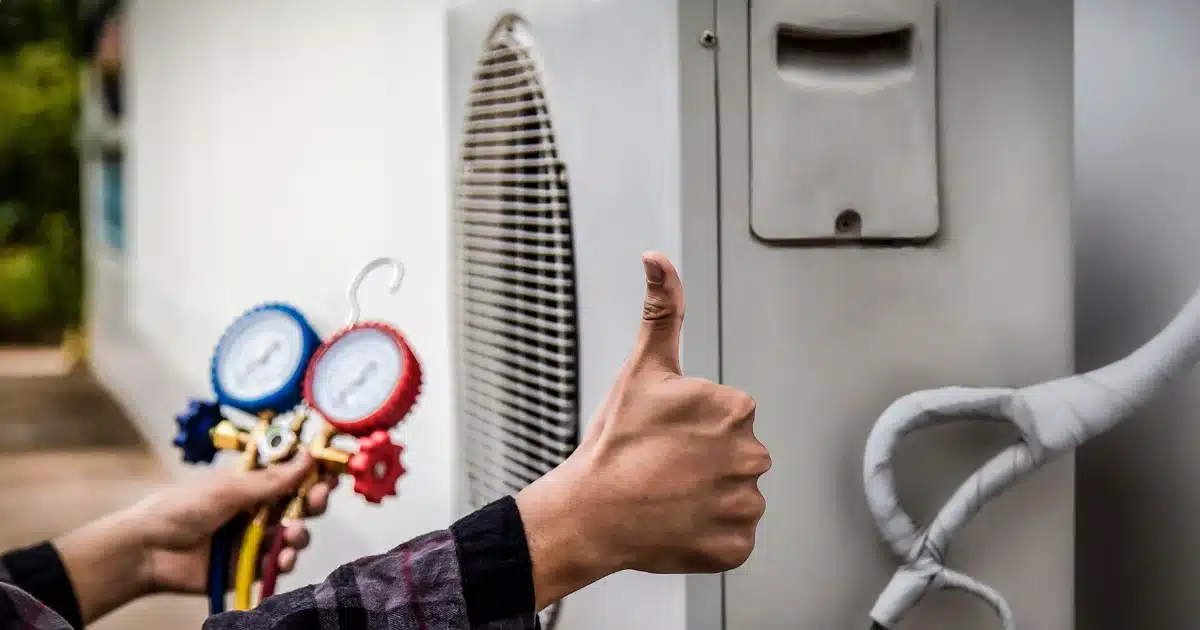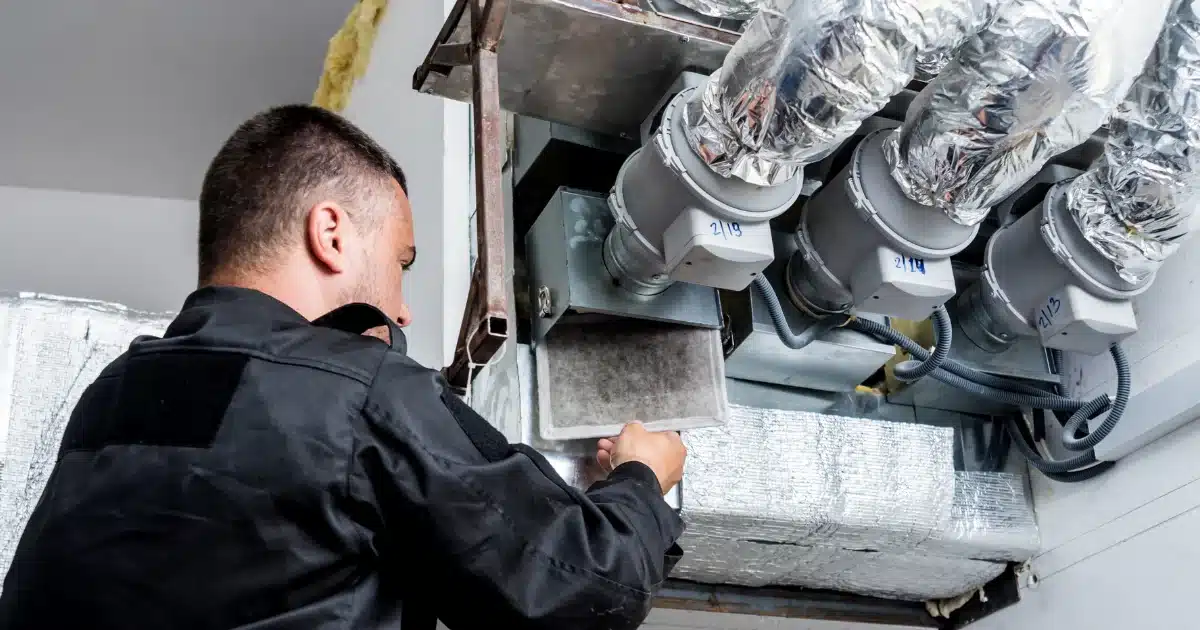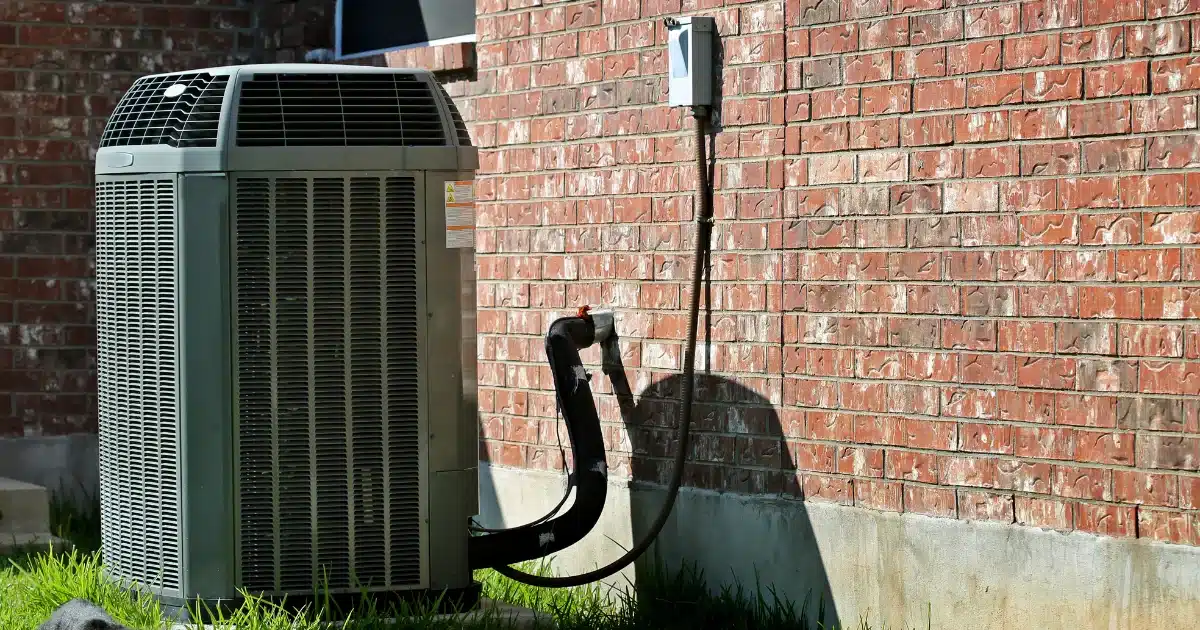Table of Contents
ToggleUnderstanding HVAC Systems
Introduction to HVAC Systems
HVAC stands for Heating, Ventilation, and Air Conditioning, three crucial functions that are interrelated and essential for ensuring indoor comfort, air quality, and thermal control in residential, commercial, and industrial buildings. An HVAC system’s primary role is to move air between indoor and outdoor areas, heat and cool residential and commercial buildings, and improve indoor air quality through filtration and humidity control. Given the diverse climate conditions across different regions and the varying needs of buildings, HVAC systems come in numerous types and complexities..
HVAC systems belong to the group of home and building comfort utilities. However, the systems come in different types. Therefore, the lifespan of an HVAC system may depend on the kind, quality of installation, how maintenance practices are being carried out, and usage patterns. Here are generally the life expectancy of the most common HVAC systems:

Central Air Conditioners: Generally, a central air conditioning unit has a durability range between 15 to 20 years. However, proper maintenance can lengthen its working life, while tough operating conditions and lack of service practices could reduce it.
Furnaces: An average gas furnace will last between 20 to 30 years, and electric modelssometimes last over 30 years since they have fewer mechanical parts to spoil. However, proper and regular maintenance boosts their life.
Heat Pumps: Heat pumps, providing both heating and cooling, have a shorter life expectancy and should be replaced every 10 to 15 years. This is because they run all year round and thus have more wear and tear.
Boilers: Traditional cast-iron boilers could even last more than 30 years, while modern, more efficient versions have a slightly shorter useful life—from 15 to 25 years.
Ductless Mini-Splits: Generally, ductless mini-split systems last approximately 15 to 20 years and are generally used for local or zoned heating and cooling within smaller areas of a building. Your regular maintenance, including yearly inspections, filter change, and quick repair of any trouble, will help expand the lifespan of your HVAC system. Besides these, quality installation by certified professionals makes a great difference in the longevity of the system.
Plus, choosing quality brands and models—preferably from those most reputable and meeting the requirements of the property—can further serve to ensure efficient operation and longevity of the system. This helps the property owner in getting a rough idea regarding the average life expectancy, knowing how they can make plans for investments in the future, and maintaining the current unit will help them run efficiently and reliably throughout the years.

Components of HVAC Systems
To fully appreciate how long an HVAC system lasts, it’s important to first understand its key components and how they work together. An HVAC system can be divided into several main parts:
- Heating Component:This can include furnaces or heat pumps that provide heating by burning fuel, using electrical resistance, or transferring heat from an external source. The heating element raises the air temperature in the building during colder months.
- Cooling Component:Central air conditioners and cooling parts of heat pumps fall under this category. They remove heat and moisture from the air to lower the temperature during warmer months.
- Ventilation Component:This system circulates and exchanges indoor air with outdoor air to maintain air quality and comfort. It includes air handlers, ductwork, and filters to distribute and filter air throughout the building.
- Control System: Often centralized in a thermostat, this component regulates the temperature and sometimes humidity levels within a building. It automates the operations of the heating, cooling, and ventilation components based on the settings programmed by the user.
Types of HVAC Systems
HVAC systems vary widely in terms of size, technology, and configuration, depending on the building’s needs, climate, and other factors. Here are some of the most common types:
- Central Air Conditioners: These systems use a network of ducts to distribute cool air across the entire building. They are efficient for cooling large spaces but require significant space for ductwork.
- Heat Pumps:Heat pumps can provide both heating and cooling by transferring heat from the air or ground outside a building into the interior spaces during winter and reversing the process in summer.
- Furnaces: Furnaces generate heat through the combustion of natural gas, oil, coal, or the use of electricity. They are a common heating solution in colder climates.
- Boilers:Boilers heat water, providing either hot water or steam for heating. Steam is distributed via pipes to steam radiators, while hot water can be distributed via baseboard radiators, radiant floor systems, or air via a coil.
- Ductless Mini-Split Systems:These systems provide targeted heating and cooling without the need for ductwork, making them suitable for homes without existing ducts or for room additions.
The Importance of HVAC Systems
HVAC systems play a pivotal role in not only maintaining comfortable indoor temperatures but also in protecting indoor air quality. They filter out pollutants, allergens, and dust from the air, helping to prevent respiratory diseases and allergies. Furthermore, by controlling humidity levels, they prevent the growth of mold and mildew, which can cause significant health and structural issues in buildings.
Properly functioning HVAC systems are also crucial for the safety and preservation of equipment in commercial and industrial settings, where specific temperature and humidity levels must be maintained to ensure the integrity of products and machinery.
The Evolution of HVAC Technology
Over the years, HVAC technology has seen significant advancements aimed at improving efficiency, environmental sustainability, and user convenience. Modern systems are designed with a focus on energy efficiency, reducing the carbon footprint of heating and cooling operations. Innovations such as smart thermostats, geothermal heat pumps, and energy recovery ventilators are examples of how the industry is evolving to meet the demands of modern consumers and environmental standards.
Moreover, the integration of smart home technology with HVAC systems allows homeowners and facility managers to monitor and control their heating, cooling, and ventilation systems remotely, offering unprecedented control over indoor climate and potential energy savings.
Factors Influencing the Lifespan of HVAC Systems
The longevity of HVAC systems is a matter of significant importance due to the substantial investment they represent. Various factors, ranging from the quality of installation to regular maintenance and the system’s operational environment, play pivotal roles in determining how long an HVAC system can reliably function. Understanding these factors can help in planning for future investments, ensuring continuous comfort, and avoiding unexpected system failures.
Quality of Installation
- Professional Installation is Key: The initial setup of an HVAC system profoundly impacts its efficiency, performance, and lifespan. Professional installation by certified technicians, such as those from On Services, ensures that the system is correctly sized for the building, properly integrated with existing structures, and meets all regulatory standards.
- Potential Consequences of Poor Installation:Incorrect installation can lead to frequent breakdowns, inefficient energy use, and a significantly shortened lifespan of the system. It’s crucial to invest in skilled installation services to avoid these pitfalls.
Regular Maintenance
- Preventive Maintenance: Regular check-ups and maintenance are akin to routine health checks for HVAC systems. They involve cleaning components, replacing filters, checking fluid levels, and ensuring that all parts are in good working condition.
- Impact of Neglect:Without regular maintenance, systems are prone to inefficiencies, higher operating costs, and premature breakdowns. The cumulative effect of neglect can drastically reduce an HVAC system’s lifespan.
Usage Patterns
- Impact of Climate:Systems in regions with extreme weather conditions—harsh winters or sweltering summers—tend to work harder, which can accelerate wear and tear.
- Frequency of Use: The more frequently an HVAC system is used, the more wear it experiences. Proper sizing and timely adjustments to usage can mitigate excessive wear.
System Type and Model
- Technological Advances: Newer models of HVAC systems often come with improved designs and materials that can enhance longevity. They may also include features that promote energy efficiency and reduce the wear on critical components.
- Type-Specific Lifespans:Different types of HVAC systems—such as furnaces, heat pumps, and central air conditioners—have varying average lifespans. These differences are due to the distinct operational stresses and maintenance requirements of each system type.
Environmental Factors
- Location:External environmental factors, including salt air in coastal regions and pollutants in industrial areas, can accelerate system degradation.
- Indoor Environment: The presence of dust, chemical vapors, and other indoor air pollutants can also affect system components, necessitating more frequent maintenance or leading to earlier system failure.
User Intervention
- DIY Repairs:While minor adjustments and filter changes can be safely done by homeowners, attempting complex repairs without professional knowledge can lead to further damage and reduced system life.
- Modifications and Upgrades:Improperly executed modifications or the addition of incompatible parts can negatively impact system performance and longevity.
Signs Your HVAC System May Need Replacement
Increasing Repair Frequency
- Early Warning Signs:An uptick in the frequency of repairs, especially for critical components like the compressor or heat exchanger, often signals that the system is experiencing significant wear and tear. While occasional repairs are expected, a pattern of frequent breakdowns indicates underlying issues that may not be cost-effective to continuously address.
- Cost Considerations:Beyond the inconvenience of repeated malfunctions, the financial burden of ongoing repairs can quickly accumulate, sometimes making system replacement a more economical choice in the long term.
Rising Energy Bills
- Inefficiency and Age:One of the most noticeable signs of an aging HVAC system is a gradual increase in energy bills without a corresponding rise in utility rates or a significant change in usage patterns. As systems age, they often lose efficiency due to wear on mechanical components and outdated technology.
- Assessing Performance:Regular monitoring of energy usage can help identify inefficiencies early. Comparing current performance metrics to historical data can reveal trends that warrant further investigation.
Inconsistent Temperatures
- Comfort Issues: Difficulty maintaining consistent temperatures throughout the property or significant deviations from set temperatures can indicate that the HVAC system is no longer able to effectively distribute air. Such performance issues often stem from problems with the HVAC unit itself, ductwork leaks, or inadequate insulation.
- Zoning and Upgrades: Modern HVAC systems offer improved zoning capabilities and more precise control over indoor climates. Inconsistencies in older systems might not be resolvable without upgrades or replacement.
Unusual Noises or Smells
- Acoustic Indicators:Sudden, loud, or unusual noises during operation—such as grinding, banging, or squealing—can signal mechanical issues within the HVAC unit. These sounds may indicate loose parts, bearing failures, or other mechanical problems that, if left unaddressed, can lead to catastrophic failure.
- Olfactory Warnings:Unpleasant odors emanating from HVAC systems can also be a sign of trouble. Musty smells may suggest mold growth within the ductwork or unit, while burning or electrical odors could indicate dangerous electrical issues or overheating components.
Age of the System
- Expected Lifespan:Although well-maintained HVAC systems can exceed their expected lifespans, most systems have an average operational life ranging from 15 to 25 years, depending on the type, usage, and maintenance history. Systems approaching or exceeding their expected lifespan may not only be less efficient but also less compatible with newer, more eco-friendly refrigerants and technologies.
- Technological Obsolescence: Older systems may lack the features and efficiencies of newer models. Advances in HVAC technology, such as variable speed fans and smart thermostat compatibility, offer significant improvements in energy efficiency and climate control that older systems cannot match.
Recognizing these signs is crucial for planning and budgeting for a replacement HVAC system before facing an outright failure. Proactive replacement can also offer the opportunity to upgrade to more energy-efficient models, reduce environmental impact, and improve indoor air quality and comfort levels.
Extending the Life of Your HVAC System
Regular Professional Maintenance
- Scheduled Check-ups:Just like regular health check-ups can prevent illnesses, scheduled HVAC maintenance is crucial for detecting and mitigating potential issues before they escalate. Professional technicians can perform comprehensive assessments, including cleaning condenser coils, checking refrigerant levels, testing system controls, and ensuring that all components are in optimal working condition.
- Maintenance Contracts:Consider establishing a maintenance contract with a reputable HVAC service provider like On Services. These contracts often include bi-annual check-ups and can offer peace of mind, convenience, and sometimes even discounts on parts and services.
Timely Repairs
- Address Issues Promptly: Ignoring minor issues can lead to major problems down the line. Promptly addressing signs of wear or malfunction can prevent the cascading effect of damages that ultimately shorten the lifespan of the system.
- Quality Parts and Services: Use high-quality replacement parts and ensure repairs are carried out by certified professionals who can guarantee their work. This ensures that repairs contribute to the longevity of the system rather than introducing potential new problems.
Upgrades
- Component Upgrades:Over time, certain components of the HVAC system may become obsolete or wear out. Upgrading these components, such as installing a more efficient blower motor or thermostat, can enhance the overall system performance and efficiency.
- System Upgrades:In some cases, upgrading the entire HVAC system to a more modern and efficient model can be more cost-effective in the long run. New technology advancements not only improve comfort but also offer significant energy savings, which can offset the initial investment over time.
Air Filters
- Regular Replacement or Cleaning: One of the simplest yet most effective ways to extend the life of an HVAC system is to keep the air filters clean. Dirty filters restrict airflow, causing the system to work harder, which can lead to overheating and increased wear on components. Depending on the type of filter and the system’s usage, filters should be replaced or cleaned every 1-3 months.
Ductwork Maintenance
- Sealing and Insulation:Ensuring that ductwork is properly sealed and insulated can dramatically improve the efficiency of the HVAC system. Leaks in the ductwork can lead to loss of conditioned air and make the system work harder to maintain desired temperatures.
- Regular Cleaning:Dust and debris accumulation in the ducts can hinder airflow and degrade air quality. Professional duct cleaning services can remove these obstructions and improve the system’s efficiency and longevity.
Thermostat Settings
- Optimal Settings: Using programmable thermostats to set optimal temperatures for different times of the day can reduce the workload on the HVAC system. Maintaining a moderate temperature difference between indoor and outdoor environments can prevent excessive stress on the system.
System Use and Care
- Balanced Use:Avoid overworking the system by balancing its use with natural ventilation and shading techniques to maintain comfortable temperatures. Using ceiling fans to circulate air can also reduce the reliance on the HVAC system for cooling.
- Physical Protection: Ensure the outdoor unit is protected from debris, plant overgrowth, and extreme weather conditions. Regularly inspect and clean the area around the outdoor unit to prevent obstructions that could reduce airflow and efficiency.
Conclusion
As we navigate through the complexities of HVAC systems—from understanding their fundamental operations to recognizing when replacements are necessary and exploring the future trends shaping the industry—it’s clear that the role of these systems extends far beyond mere temperature control. They are pivotal in ensuring energy efficiency, promoting environmental sustainability, and enhancing the comfort and health of indoor environments. The journey through the lifespan of an HVAC system, underscored by the need for regular maintenance, timely upgrades, and the eventual consideration for replacement, highlights the importance of proactive management in maximizing system performance and longevity.
For property owners and facility managers, the evolving landscape of HVAC technology presents both challenges and opportunities. Embracing the innovations and trends in the HVAC industry can lead to significant benefits, including reduced energy costs, improved indoor air quality, and a lesser environmental impact. However, navigating these advancements requires expertise and a strategic approach.
On Services stands at the forefront of HVAC excellence, offering a comprehensive suite of services tailored to meet the modern demands of heating, ventilation, and air conditioning. Our team of certified professionals is equipped with the knowledge, tools, and experience to ensure your HVAC system operates at its peak, delivering comfort and efficiency without compromise.
We invite you to take the next step towards optimizing your HVAC systems by:
- Scheduling a Maintenance Check:Ensure your system is running efficiently and catch any potential issues before they become major problems.
- Consulting on Upgrades:Explore the latest in HVAC technology with our experts and determine if your system could benefit from an upgrade or replacement to save on energy costs and improve performance.
- Leveraging Our Expertise:Whether you’re considering a new installation or need advice on maintaining your current system, our team is here to provide the guidance and services you need.
Contact On Services today to learn more about how we can support your HVAC needs, ensuring a comfortable, efficient, and sustainable environment for your property. Let us help you navigate the future of HVAC, embracing innovations that align with your goals for efficiency, comfort, and sustainability.





